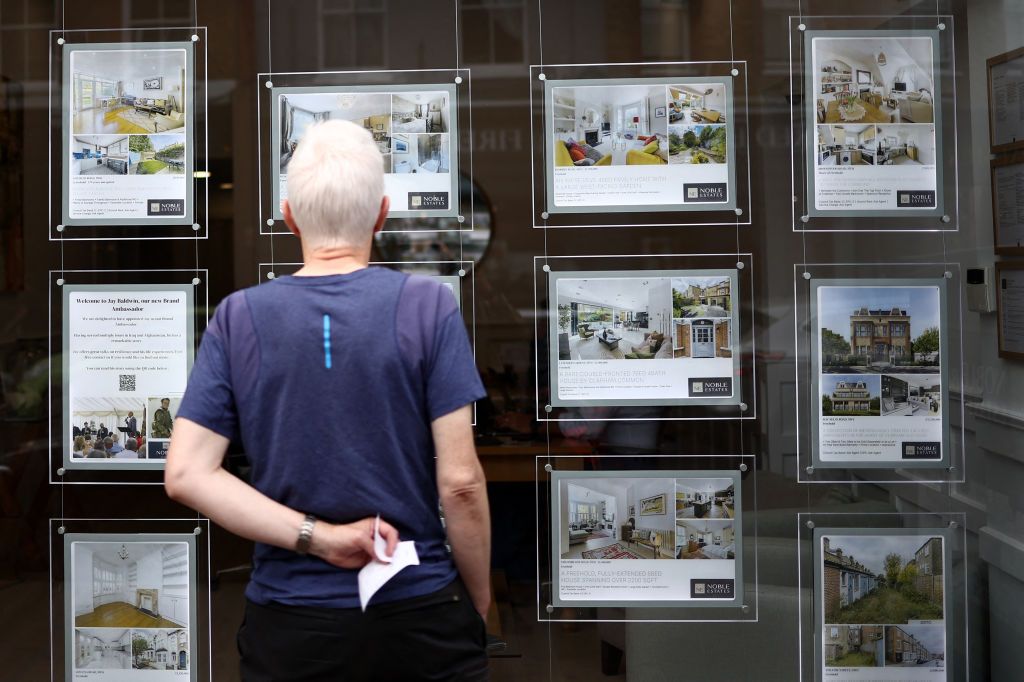Asking prices for UK properties fell by 1.2% in July, bringing the average to £373,709, according to Rightmove. That’s £4,531 less than they were a month ago, and just 0.1% higher than they were a year ago.
While a seasonal dip in average asking prices often comes in July as it’s the traditional summer holiday season, this July’s drop is the highest ever recorded by the firm, which has over 20 years of data to look at.
Though such a dramatic drop could be seen as an indicator that the housing market is slowing, Rightmove interprets the dip as showing that sellers are enticing buyers with more competitive deals.
Subscribe to MoneyWeek
Subscribe to MoneyWeek today and get your first six magazine issues absolutely FREE
Get 6 issues free
Sign up to Money Morning
Don’t miss the latest investment and personal finances news, market analysis, plus money-saving tips with our free twice-daily newsletter
Don’t miss the latest investment and personal finances news, market analysis, plus money-saving tips with our free twice-daily newsletter
The number of homes on the market is also at a decade-long high, with sellers driving down asking prices to attract buyers this summer.
The data indicates that this approach is working. The number of sales agreed upon is 5% higher than it was last year, suggesting realistic and competitive pricing is the key to getting a sale.
Phillip Bishop, managing director at estate agent Perry Bishop, says buyers are enjoying “significant property choice and availability, which is allowing them to be uncompromising on their criteria and expectations”.
He adds that with so much choice, “buyers are taking their time and viewing more before deciding, and the serious and motivated sellers are pricing sensibly and getting success”.
Overall affordability has also improved since this time last year.
Average wage growth has outstripped both inflation and house price growth while mortgages have become cheaper as the Bank of England continued to gradually lower interest rates this year.
The average two-year fixed mortgage rate is 4.53%, much lower than the 5.34% it was last year, bringing savings of nearly £150 per month on a typical new mortgage, says Rightmove.
With the markets expecting the central bank’s Monetary Policy Committee to cut interest rates twice more this year, further property market activity could be stimulated.
Colleen Babcock, property expert at Rightmove, says we are “seeing an interesting dynamic between pricing and activity levels right now”.
She says the “healthy and improving level of property sales” shows buyers are motivated to finalise deals and the “decade-high level of buyer choice” means buyers can quickly spot when a home looks overpriced compared to others.
“It appears that more new sellers are conscious of this and are responding to this high-supply market with stand-out pricing to entice buyers and get their home sold,” she adds.
The new data also indicates that the property market is returning to normal following hikes to stamp duty that came into effect in April.
Nathan Emerson, CEO of Propertymark, said the market “is witnessing a steady return to normality following stamp duty threshold changes for those living in England and Northern Ireland at the start of April.”
He added that in the face of disruptions to the housing market this year, “it is good to see yet further resilience in house prices year on year.”
Looking into the second half of the year, Rightmove has reduced their house price forecast for 2025 down from 4% growth to just 2% as a more competitive marketplace is limiting price growth.
Where in the UK are asking prices falling the most?
The average asking price of a property in London fell once again in July.
Asking prices in Greater London fell by 1.5% this month, Rightmove said, with the prime inner London property market reporting an even greater drop of 2.1%
Asking prices in the capital are 1.1% lower today than they were a year ago – far below the 0.1% national average growth.
While London saw the most significant fall in asking prices this month, it is far from the only region that saw them fall.
The second-largest regional fall in asking prices was in the South East where they fell by 1.2% month-on-month, but have still grown by 0.2% on the year.
The North West and South West saw asking prices fall by 1.2% and 1.1% on the month, respectively.
Every UK region apart from the North East and East Midlands saw average asking prices fall.
Prices in the East Midlands remained steady in July, changing by 0%, while asking prices in the North East grew by 1.2% since last month and 2% since last year.

